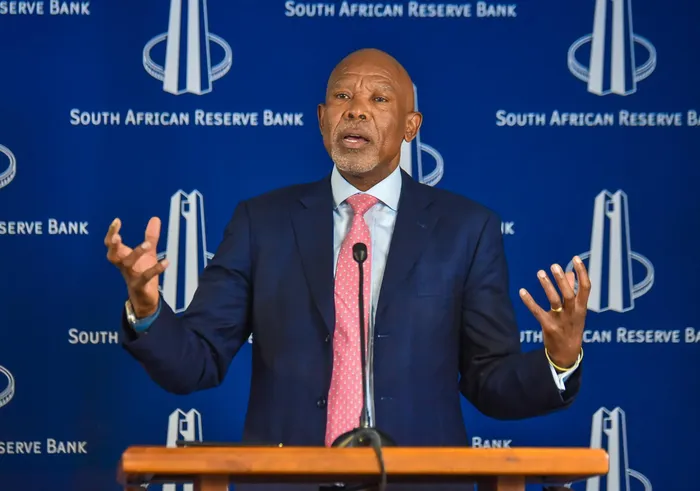Reserve Bank cuts interest rates by 0.25% as economic prospects improve

The South African Reserve Bank has cut interest rates by 0.25%, bringing the prime rate down to 10.25%. This article examines how this will benefit indebted households, what it means for mortgage payments, and why experts believe South Africa's economic outlook is improving despite ongoing inflation challenges.
Image: SARB | Facebook
The outlook for consumers seems to be looking up, with inflation set to stabilise towards the end of the year, interest rates coming down, and a rand that has settled within a more predictable range.
On Thursday, much as expected, South African Reserve Bank (SARB) governor Lesetja Kganyago announced that the interest rate would decline by 0.25 percentage points, dropping prime to 10.25%.
After holding rates steady at the previous meeting, the Monetary Policy Committee’s unanimous decision takes the total decline in rates between last September and now to 1.25 percentage points.
“This will lower the repayments on all sorts of debts, from credit cards and personal loans to car finance and mortgage bonds,” says Stephen Whitombe, MD of the FIRZT Realty group.
According to Thys van Zyl, CEO of Everest Advisory Services, the reduction is both a psychological and an economic lifeline for indebted households.
“This cut is good news for households that have been under severe debt and cost pressure over the past two years. It provides direct financial relief, improves cash flow, and sends a positive signal that inflation remains under control,” says Van Zyl.
The cumulative drop since the rate-cutting cycle started means that, on a R1 million mortgage at prime, the monthly repayments have reduced from R10,837 per month to R9,984 – a monthly saving of R853 and over R10,000 per year, Jawitz Properties calculations show.
November’s rate cut – glad tidings ahead of the festive season, which immediately cuts monthly repayments on a R2 million home by R300 a month according to BettaBond’s calculations – came on the back of the inflation Grinch.
On Wednesday, Statistics South Africa announced that year-on-year inflation had moved up to 3.6% from 3.4% the prior month, with the cumulative effects weighing heavily on wallets.
To put this in context: a trolley of groceries that cost you around R1,000 at the start of the century will now cost R3,733, according to a website set up by Renier Crause.That works out to a compound increase of 277%.
Even before Statistics South Africa’s figures were published on Wednesday morning, Benay Sager, executive head of DebtBusters, had said that “electricity costs 165% more than nine years ago”.
Petrol is 80% higher than nine years ago, contributing to cumulative inflation of 51%, Sager says.
However, the outlook is fairly positive.
Inflation is set to start dropping, says Kganyago. He says inflationary pressures such as non-core items – meat, vegetables, and fuel – are “temporary, with inflation heading lower again from the beginning of next year. Indeed, recent outcomes have undershot our forecasts slightly”.
In announcing the interest rate decision, Kganyago said “there was scope now to make the policy stance less restrictive, in the context of an improved inflation outlook”.
Bianca Botes, director at Citadel Global, notes that “inflation is projected to linger around the 3.4% mark for the remainder of 2025”.
Kganyago is more bullish than Finance Minister Enoch Godongwana in terms of gross domestic product (GDP) growth. The governor said that GDP gains were predicted to come in at 1.3% this year, while the minister pegged growth at 1.2% just a week prior.
A few months ago, economists had broadly expected growth to end at around 1%, which would have been double that of 2024.
Van Zyl says the timing of the cut aligns well with improving macroeconomic conditions.
“The economy now has a window of opportunity: improved fiscal metrics, a more positive Medium-Term Budget Policy Statement, and South Africa’s foreign-currency credit rating being upgraded for the first time in 20 years. In such an environment, a modest interest rate cut is not only safe – it is sensible,” he says.
The local currency has been a beneficiary of an improved economic and fiscal outlook, breaking through R17 to the dollar for the first time since February 2023 on the back of the budget before weakening somewhat.
Botes says, “The rand has recently shown remarkable resilience through heightened uncertainty in global markets, because it benefited from multiple supportive factors”.
SA Inc. also received S&P Global’s stamp of approval last weekend when it upgraded South Africa’s credit rating for the first time in 25 years. Moody’s is set to review its stance on December 5 and is maintaining a cautious viewpoint based on South Africa’s debt-to-GDP ratio.
Having been removed from the Financial Action Task Force’s greylist is also beneficial for the economy, as it could reignite foreign interest in local property, giving a much-needed boost to the moribund sector, according to Berry Everitt, CEO of the Chas Everitt International property group.
Likewise, increased tourism related to Johannesburg’s hosting of the main G20 summit event this weekend could create jobs, Everitt has also previously said.
FNB CEO Harry Kellan says, “after a year of modest growth, several sectors are also beginning to show encouraging signs of improvement. South Africa’s hosting of the G20 Summit has also drawn international investor interest in Africa, further strengthening the outlook for local business.”
However, Van Zyl notes that “South Africa needs lower real interest rates to stimulate growth. This cut will ease the debt burden on households and improve sentiment at a time when structural reforms are finally beginning to bear fruit.”
Van Zyl also warns that the rate cut does not signal the end of economic risks, as the country remains vulnerable to shocks in an environment in which real growth is still too low.
PERSONAL FINANCE